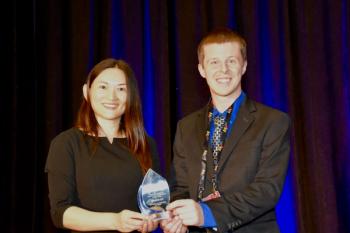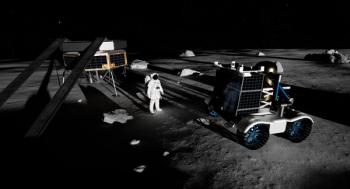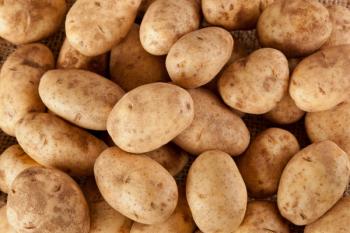
The Impact of LIBS on Space Exploration: Lunar and Asteroid Exploration
Laser-induced breakdown spectroscopy (LIBS) is being used frequently in space exploration missions. In this article, we review how LIBS is being used to increase our knowledge of the Moon and certain asteroids.
In a
LIBS spectra contain detailed information about the elemental composition of the material under study, which makes it an ideal technique for studying rocks and minerals, such as the ones found in outer space (3). On the lunar surface, LIBS is used to determine the elemental composition of regolith and rocks, aiding in the identification of valuable resources such as rare earth elements, titanium, and helium-3 (1). These materials are essential for future lunar bases and sustainable exploration missions. Notably, missions like Chandrayaan-3 have demonstrated the potential of LIBS-based instruments for assessing the Moon’s mineralogy, despite operational challenges such as extreme temperatures and limited sunlight (1). LIBS enables high-resolution, real-time data collection directly on the lunar surface, eliminating the need for complex sample return missions (1).
The Chandrayaan-3 mission to the Moon was important because it provided key information about the lunar surface (4). Launched by the Indian Space Research Organization (ISRO), the mission consisted of the Vikram lander and Pragyan rover landing on the south pole of the moon (1,5). Its objectives mostly involved conducting in situ scientific experiments on the lunar surface using LIBS (6).
Meanwhile, LIBS is also being used extensively to study asteroids. LIBS has enabled scientists to study the composition of asteroids more, which has allowed them to learn more about these celestial bodies formed (1). Because asteroids are believed to be remnants from the early solar system, learning more about the elemental composition of asteroids can provide us with information about the formation of the galaxy and universe.
Another benefit of LIBS is that it can analyze the surface of asteroids to detect not only metals, but also silicates and volatile compounds, helping to identify resources like platinum group metals and water (1). Such analyses are crucial for understanding the formation and evolution of the solar system and for enabling asteroid mining, which could support off-Earth industries (1).
This review article also explored how LIBS is being combined with other techniques to advance space exploration. In the review article, the research team discussed how LIBS is being combined with Raman spectroscopy, Fourier transform-infrared (FT-IR) spectroscopy, and mass spectrometry (1). These integrations have been beneficial because they have enabled scientists to conduct multi-faceted analyses of celestial materials, providing a better understanding of their composition and properties (1).
The review article also discussed how advancements in data processing has helped interpret LIBS data. For example, transfer learning, which adapts pre-trained machine learning (ML) models, has enabled data analysis to be done much more effectively and efficiently (1). This is crucial for analyzing LIBS data in diverse extraterrestrial environments where there is a high volume of data to interpret (1). These developments are vital for overcoming challenges in calibration and spectral interpretation, particularly in the absence of Earth-like standards.
The review article concluded by emphasizing LIBS’ significant contributions to space exploration. As the demand for space resources grows, LIBS’ capabilities in identifying and quantifying valuable materials will become increasingly critical. The missions conducted by NASA, China, and ISRO demonstrate the importance of using LIBS and other spectroscopic techniques, and how they are helping propel space exploration forward in the 21st century.
References
- Saeidfirozeh, H.; Kubelik, P.; Laitl, V.; et al. Laser-induced Breakdown Spectroscopy in Space Applications: Review and Prospects. TrAC Trends Anal. Chem. 2024, 181 Part B, 117991. DOI:
10.1016/j.trac.2024.117991 - Wetzel, W. The Impact of LIBS on Space Exploration: Mars. Spectroscopy. Available at: [URL added when article is published] (accessed 2024-11-18).
- McMillan, N. Laser-Induced Breakdown Spectroscopy (LIBS). Carleton.edu. Available at:
https://serc.carleton.edu/msu_nanotech/methods/libs.html (accessed 2024-11-18). - Marshall, M. India’s Pioneering Mission Bolsters Idea that Moon’s Surface was Molten. Nature.com. Available at:
https://www.nature.com/articles/d41586-024-02695-w#:~:text=Santosh%20Vadawale%2C%20an%20X%2Dray,Apollo%2011%20landing%20was%20analysed . (accessed 2024-11-18). - NASA, Chandrayaan-3. NASA.gov. Available at:
https://science.nasa.gov/mission/chandrayaan-3/ (accessed 2024-11-18). - Indian Space Research Organisation, Department of Space. Chandrayaan-3. ISRO.gov.in. Available at:
https://www.isro.gov.in/Chandrayaan3_Details.html#:~:text=Chandrayaan%2D3%20consists%20of%20an,conduct%20in%2Dsitu%20scientific%20experiments . (accessed 2024-11-18).
Newsletter
Get essential updates on the latest spectroscopy technologies, regulatory standards, and best practices—subscribe today to Spectroscopy.




